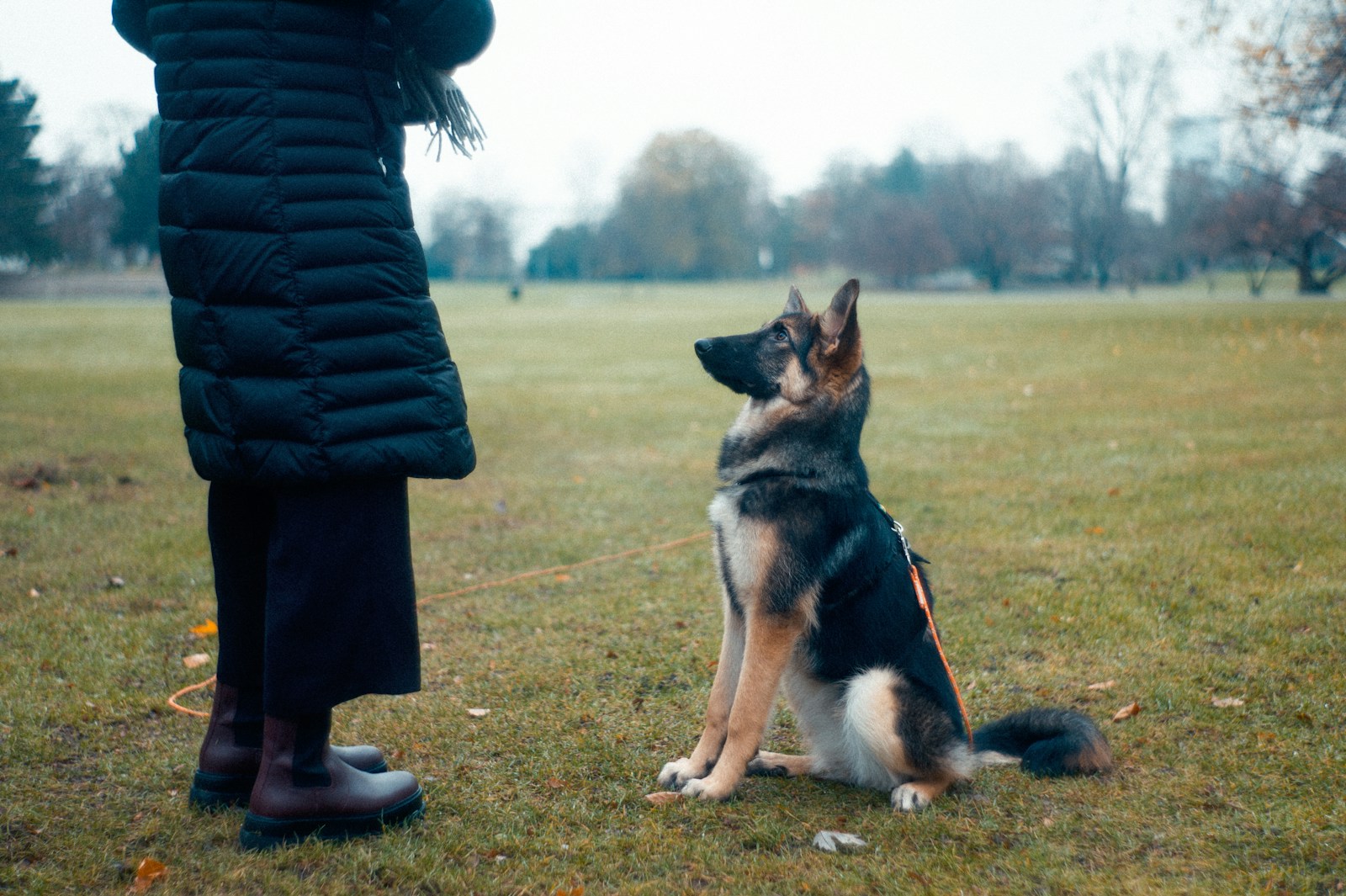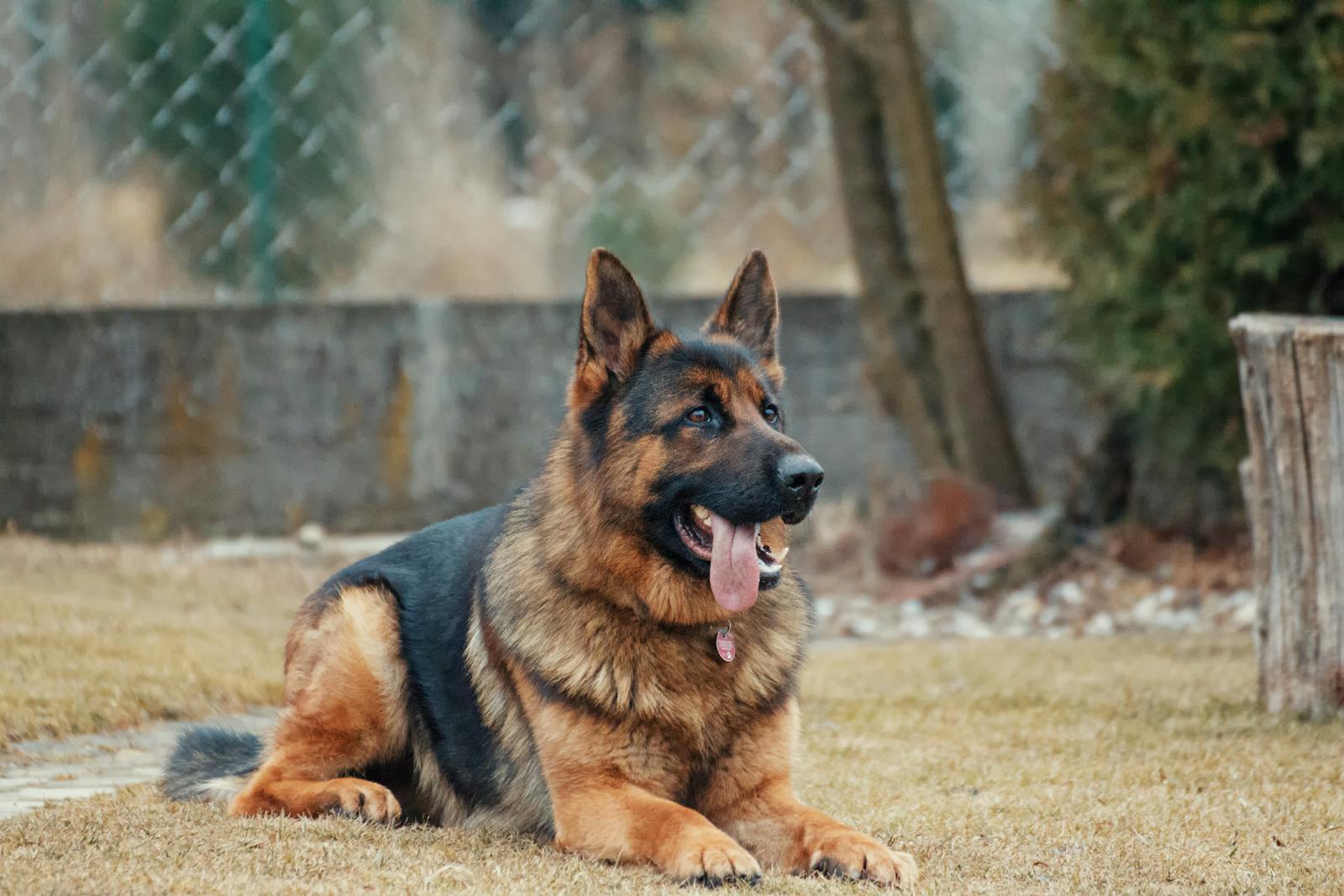Teaching Your Dog to Be a Great Listener: The Art of Focused Training
Understanding Canine Attention: Why Focused Training Matters
When we think of a well-behaved dog, the image that often comes to mind is one of a pet calmly sitting by its owner’s side, attentive and engaged. This isn’t just a happenstance; it’s a direct result of focused training that cultivates canine attention. In this blog post, we’ll delve into the importance of training your dog to listen, the benefits of this foundational skill, and how it strengthens the bond between you and your furry companion.
The Importance of Focused Training
Focused training is the cornerstone of effective dog ownership. Just like humans, dogs thrive on communication and predictable interactions. When a dog knows how to pay attention and respond to commands, it becomes easier for both the owner and the dog to navigate the world together.
Establishing a Foundation of Trust
Focused training builds trust between two key players: you and your dog. When your dog listens and responds to your commands, they recognize you as a leader, someone who guides them safely through various situations. This mutual understanding creates a calming environment where both dog and owner feel secure.
Enhancing Safety
The ability for a dog to focus on its owner can deter potentially dangerous situations. For instance, a well-trained dog that consistently responds to ‘come’ or ‘stay’ commands will be less likely to dart into traffic or wander off. This safety net is invaluable for owners in ensuring their pet’s well-being.
Benefits of Canine Attention for Dogs and Owners
Investing time in focused training not only makes day-to-day life smoother but also enriches the overall bond you share with your dog. Here are several key benefits that you’ll experience:
1. Improved Communication
The bedrock of any relationship is communication, and the dog-owner relationship is no different. When your dog learns to listen to commands, it leads to clearer exchanges. This is critical in situations that require immediate action. For instance, teaching your dog to respond to a “leave it” command can protect them from dangerous substances they might find outside.
2. Enhanced Socialization Skills
A dog that knows how to focus on its owner will tend to have better social skills with other dogs and people. Training helps dogs overcome fear or anxiety in new social situations, reducing the likelihood of aggressive behaviors. With a well-trained dog, outings to parks, pet-friendly cafes, or visits to friends can be enjoyable for everyone involved.
3. Increased Confidence
Dogs, like humans, gain confidence from having structure and predictability in their environment. When your dog is trained to listen to you, it becomes more confident in navigating their surroundings. This newfound confidence makes them more adaptable and willing to learn new things, whether it’s mastering agility equipment or following new tricks.
4. Reduced Behavioral Problems
A lack of attention can often lead to behavioral issues such as excessive barking, chewing on furniture, or separation anxiety. Focused training channels your dog’s energy in constructive ways. Dogs that receive adequate attention and mental stimulation tend to exhibit fewer troublesome behaviors.
How to Train Your Dog to Focus
Now that we’ve established the importance of focused training, how can you implement this effectively? Here are some actionable tips to help enhance your dog’s attention skills:
1. Start with Basic Commands
- Sit, Stay, Come, and Heel: These fundamental commands provide a strong foundation for more advanced training. Practice these commands in short, engaging sessions, as dogs respond best to positive and consistent reinforcement.
2. Use Positive Reinforcement
- Reward Good Behavior: Utilize treats, praise, or playtime as rewards when your dog pays attention and follows commands. This encourages them to repeat the behavior in the future.
3. Minimize Distractions
- Select a Quiet Environment: Start training in a familiar, distraction-free environment. As your dog becomes adept at focusing on you, gradually introduce distractions. This might involve practicing commands at a dog park or during neighborhood walks.
4. Keep Training Sessions Short and Fun
- Engage and Encourage: Dogs have shorter attention spans than humans. Keep training sessions to about 5 to 10 minutes, mixing in play or short breaks to keep your dog’s interest piqued.
5. Build Duration and Distance
- Increase Challenges Gradually: Once your dog has mastered basic commands, practice holding them for longer periods or teaching them to obey commands from a distance. This not only sharpens their focus but also enhances their self-control.
Conclusion: Elevate Your Training Game
In summary, focused training is not merely an option but a necessity for fostering a resilient and healthy relationship with your dog. Not only does teaching your dog to pay attention enhance communication and safety, but it also strengthens the bond you share.
By investing time in developing your dog’s focus skills, you’ll reap the benefits of a well-behaved pet, happier outings, and a profound sense of companionship.

Choosing the Right Environment for Focused Training
When it comes to training your dog, the environment you choose can significantly affect your success. A distraction-free area allows your pet to concentrate fully on the training you provide, which is essential for developing their focus and attentiveness. Establishing a calm atmosphere not only boosts learning but also helps mitigate unwanted distractions that can derail training efforts.
The Significance of a Calm Atmosphere
A serene environment plays a vital role in a dog’s ability to listen and comply with commands. Just as humans can struggle to concentrate in a noisy or chaotic setting, dogs can become overwhelmed by distractions, preventing them from focusing on you. Selecting the right location fosters a peaceful vibe that promotes learning and bonding.
Why a Calm Environment Matters:
- Reduces Anxiety: An environment filled with noise or unfamiliar stimuli can trigger anxiety in dogs. This can lead to fidgeting or lack of focus. A calm setting helps your pet feel secure, increasing their willingness to engage in training.
- Enhances Learning: Dogs are naturally curious and easily distracted. A peaceful atmosphere minimizes interruptions, allowing them to absorb commands and rewards more effectively, translating to better comprehension of what’s being taught.
- Strengthens Focus: Training in a calm space helps your dog practice maintaining focus in more challenging environments down the line. They are more likely to learn to ignore distractions when they’ve had practice doing so in a quiet setting.
Tips for Selecting a Distraction-Free Training Area
When you’re ready to embark on training sessions, choosing the right environment is critical. Here are some practical strategies for finding the perfect space:
1. Look for a Quiet Home Space
- Inside Your Home: Identify a room in your home where distractions are minimized. Turn off the television, shut windows to limit outside noise, and remove toys or items that could siphon your dog’s attention away from training.
- Limited Foot Traffic: Look for spaces in your home that aren’t frequently used by family members or guests. This will help ensure your dog’s focus isn’t diverted by unexpected disruptions.
2. Choose Ideal Outdoor Locations
- Fenced Backyards: If you have a yard, this can be an ideal setting for initial training. The boundary keeps your dog from wandering off, enclosing them in a safe space where they can focus on learning without outside distractions.
- Quiet Parks or Paths: When training in an outdoor environment, seek out locations that aren’t crowded. Visit parks during off-peak hours or choose less-trafficked walking paths where humans and other animals will be less likely to interrupt your sessions.
3. Control Environmental Factors
- Time of Day Matters: Schedule training sessions during quieter times of the day. Early mornings or late evenings can often be less busy, allowing for a more peaceful atmosphere.
- Weather Conditions: Windy or rainy days can elicit excitement or anxiety in dogs. Opt for training sessions in pleasant weather to keep your dog calm and focused.
Strategies to Minimize Distractions During Training
Once you’ve established a serene environment for your training, it’s essential to maintain that calm. Here are some actionable tips to help you minimize distractions:
1. Use Visual Barriers
- Limited Viewpoints: Training your dog with barriers such as fences or gates can help reduce visual stimulation from passersby, other animals, or vehicles, allowing them to concentrate on your cues.
2. Refrain from Multitasking
- Stay Present: Engage fully with your dog during training. Avoid distractions like your phone, TV, or anything that can split your focus. Your attention and energy should be completely dedicated to your pet.
3. Gradually Introduce Distractions
- Controlled Exposure: Once your dog displays improved focus in a calm environment, gradually introduce distractions. Start by adding mild distractions—like having an inactive friend or family member present—and slowly work up to more engaging stimuli.
Conclusion: Elevate Your Training Environment
Creating the right environment for your dog’s training sessions is fundamental to their learning journey. A calm, distraction-free area significantly enhances focus and fosters the success of their training while nurturing your bond.
By diligently selecting and controlling your training environment, you can pave the way for a fruitful learning experience.

Establishing a Training Routine: The Key to Consistency in Training Schedules
While focused training sets the stage for success, establishing a solid training routine is what truly cements those skills into your dog’s behavior. A consistent schedule not only reinforces what your dog learns but also cultivates an understanding of expectations. In this section, we’ll explore the importance of consistency, training frequency, and session lengths to help you on your journey to a well-trained dog.
The Importance of a Training Routine
A training routine serves as an agreement between you and your dog. Just as children thrive on predictability, dogs also flourish under consistent conditions. These routines improve learning outcomes by allowing dogs to understand when and where they will be asked to perform tasks or follow commands.
1. Establishing a Predictable Framework
When you create a routine, your dog starts to anticipate training times. This predictability reduces anxiety and enhances focus, as dogs become accustomed to knowing what’s expected of them. For instance, if you train your dog at the same time each day, they will start to recognize that it’s time to engage and learn. This anticipation can lead to improved attention and enthusiasm during training sessions.
2. Creating Clear Expectations
Consistency in training reinforces clear expectations for your dog. By adhering to a regular schedule, you give your pet a framework to understand what behaviors are expected in different contexts. For example, training commands established during a designated training period can generalize into everyday commands. Your dog will begin to associate the “sit” command with various scenarios, whether it’s at home or during walks in the park.
3. Enhancing Memory Retention
Frequent and consistent training sessions lead to better memory retention. During each session, your dog has the opportunity to practice previously learned commands, reinforcing neural pathways. A study published in the journal Applied Animal Behaviour Science indicates that dogs thrive in learning environments where input is consistent and predictable. This reinforces the notion that routines help dogs recall commands more effectively than erratic training schedules.
How Long and How Often Should You Train?
Determining the ideal length and frequency of training sessions is vital in establishing an effective routine. Here are some guidelines:
1. Session Length
- Keep It Short and Sweet: Aim for training sessions lasting between 5 to 10 minutes. This duration caters to your dog’s attention span and ensures they remain engaged. Ending on a high note—where your dog successfully performs a command—will reinforce their eagerness for the next session.
2. Training Frequency
- Daily Sessions Recommended: Ideally, plan for daily training sessions, especially for younger dogs or those just beginning to learn. Regular, short sessions help prevent skill fade and encourage continuous learning. If daily training isn’t feasible, look to schedule at least three sessions per week to maintain effectiveness.
3. Structure and Variety Within Routine
- Incorporate Variety: Although consistency is crucial, don’t shy away from introducing variations in the routine to keep your dog engaged. Mix up commands or include new tricks occasionally. This not only challenges your dog mentally but also makes each session feel fresh and exciting.
Tips for Maintaining Consistency
Developing a training routine is one thing, but maintaining consistency is another challenge altogether. Here are some top tips to keep your routine on track:
1. Set Specific Goals for Each Session
- Focus on One Command or Trick: By setting clear objectives for each session, you create a targeted approach that is easier for both you and your dog to follow. For instance, if you choose to work on “stay” one day, continue to reinforce it until your dog achieves the desired level of understanding.
2. Keep Track of Progress
- Use a Training Journal: Documenting your training sessions can reveal patterns over time and track improvements. It allows you to note which commands your dog excels at and areas that may require more effort. This method also reinforces your commitment to the training routine.
3. Stay Patient and Adjust as Needed
- Be Adaptable: Every dog learns at a different pace, and external factors may influence their engagement level. If you find your dog losing interest, adjust the length of your sessions or the time of day you train. Making necessary modifications can be essential in keeping the training routine effective and enjoyable.
Conclusion: A Routine Fosters Understanding
Having a consistent training routine not only cultivates good habits within your dog, but it also establishes a mutual understanding of expectations. By committing to regular, brief sessions, your dog will become more attentive, responsive, and ultimately well-behaved. With the foundation of focused training coupled with a routine, you’re setting yourself up for success.
Remember, every dog is unique, and while routines are important, flexibility is key.
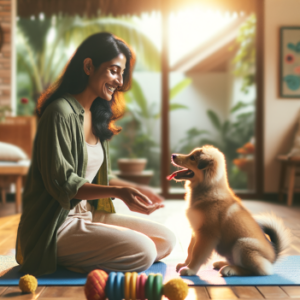
Using Positive Reinforcement
Positive reinforcement is a powerful training tool that not only encourages desired behaviors in dogs but also solidifies the bond between owner and pet. This method relies on rewarding your dog with treats, praise, or toys whenever they successfully listen and respond to your commands. The more you reinforce good behavior, the more likely your dog is to repeat it, leading to a more obedient and well-adjusted companion.
The Concept of Positive Reinforcement
Positive reinforcement hinges on the idea that rewarding an animal for a specific behavior will increase the likelihood of that behavior being repeated in the future. When your dog follows a command and receives praise or a treat, it associates the action with something positive. This creates a strong motivation to listen to you, as your dog learns that paying attention and acting accordingly results in rewards.
Types of Rewards
To effectively utilize positive reinforcement, it’s essential to understand what motivates your individual dog. Here are a few common types of rewards you can employ:
- Treats: High-value treats, especially those your dog doesn’t get very often, can be particularly effective. Experiment with different flavors and textures to find what excites your dog the most.
- Praise: Dogs thrive on approval from their humans. Enthusiastic verbal praise, a warm tone, and a loving body language can all reinforce your dog’s good behavior.
- Toys: Some dogs love to play! Using a favorite toy as a reward can be an excellent way to positively reinforce desired behaviors, particularly after training sessions or when mastering a new skill.
- Affection: Many dogs respond well to physical contact. A gentle scratch behind the ears or a belly rub can go a long way in affirming your dog’s efforts and encouraging them to perform again.
How Positive Reinforcement Enhances Listening Skills
By rewarding good behavior consistently, you’re setting the stage for more robust and effective communication between you and your dog. Here’s how positive reinforcement helps reinforce your dog’s listening skills:
- Encourages Healthy Repetition: When your dog understands that obedient behaviors lead to rewards, they become more likely to repeat those actions. For instance, if your dog sits on command and receives a treat, they’ll be eager to do so again in hopes of another reward.
- Reinforces Understanding of Commands: As your dog engages in focused training, they’re learning what each command means. Over time, with consistent rewards, your dog will start to recognize commands as valuable cues rather than just sounds coming from you.
- Strengthens the Bond: The act of training fosters a sense of partnership between you and your dog. The bond strengthens as they learn to rely on your cues and understand the reaction that follows. Positive reinforcement cultivates a social currency based on trust and affection.
Tips for Implementing Positive Reinforcement in Training
To maximize the effectiveness of positive reinforcement, consider the following strategies:
- Be Consistent: Consistency is key in any training regimen. Ensure that the same commands are paired with the same rewards. This eliminates confusion for your dog and reinforces learning.
- Timing is Everything: Reward your dog immediately after they perform the desired behavior. This helps them clearly associate their action with the reward. A delay can create confusion, making it harder for them to make the connection between the two.
- Vary the Rewards: While it’s essential to be consistent in the type of reward, you can mix things up by offering different rewards throughout the training process. This keeps the experience fun and engaging for your dog.
- Use Rewards Sparingly Over Time: As your dog becomes more accustomed to following commands consistently, you can gradually reduce the frequency of treats. This process, known as variable reinforcement, will make the behavior stick while maintaining their motivation.
- Stay Positive: Always keep training sessions upbeat and focused on progress, rather than errors. If your dog struggles with a command, approach the situation with patience. Instead of punishment, modify the approach and reward any incremental successes.
Real-World Example of Positive Reinforcement in Action
Consider a scenario where you’re teaching your dog to stay calm when guests arrive at your home. When the doorbell rings, you might instruct your dog to “go to your place.” When they do this successfully, you can immediately provide a treat or praise. This creates a positive association with the action of going to their designated spot.
Over time, your dog learns to view the arrival of guests—not as a cue to bark or rush to the door, but as an opportunity for treats and praise when they calmly settle in their spot. Through continued practice and positive reinforcement, you’ll witness your dog instinctively responding to this command without prompting!
Conclusion: Elevate Your Training Game
In summary, incorporating positive reinforcement into your dog training routine not only fosters attentive listening but also strengthens the bond between you and your furry friend. By utilizing treats, praise, and toys as motivational tools, you’re setting your dog up for success and creating a more harmonious household.
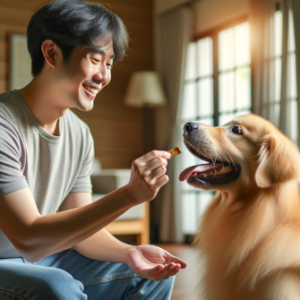
Basic Commands as a Foundation: Mastering Essential Commands for Effective Communication
Training your dog to follow basic commands is an essential part of developing a strong communicative bond. While commands like “sit,” “stay,” and “come” may seem simple, they lay the groundwork for deeper training and foster essential listening skills. By mastering these commands, you not only build a foundation for more advanced training but also facilitate a trusting relationship between you and your dog.
The Importance of Basic Commands
The dog-owner dynamic thrives on effective communication. When your dog understands basic commands, it establishes a shared vocabulary that aids in conveying your expectations clearly. Here’s how mastering these commands promotes better listening skills:
1. Building Attention and Focus
- “Sit”: This command is often the first one taught because it promotes calmness and focus. When your dog sits, it redirects their energy and attention towards you. This simple command can help filter out distractions and guide your dog into a more attentive state, making it easier to teach other commands later on.
- “Stay”: Teaching your dog to stay reinforces the concept of patience, discipline, and listening. When practice sessions require your dog to hold their position, it instills a deeper level of focus that translates to various situations. For example, having your dog stay allows you to safely open the front door without the risk of them bolting outside.
2. Effective Recall with “Come”
The power of the “come” command cannot be overstated. This command not only ensures your dog’s safety in potentially dangerous situations but also reinforces the bond between you and your dog. Here’s how it works:
- When your dog responds reliably to the “come” command, it demonstrates their attentiveness and willingness to follow your lead. This action builds trust in your leadership and aids in fostering their listening skills.
- Practicing this command in varying environments, like your backyard and local parks, helps in transferring the skill into real-world situations. The more consistent you are in training, the more your dog learns to prioritize your voice over their surroundings.
3. Developing Listening Skills with Positive Reinforcement
Incorporating positive reinforcement during training sessions enhances your dog’s willingness to listen. Rewarding successful executions of commands strengthens the connection between obedience and positivity.
- Use Treats and Praise: Keeping treats handy or showering your dog with enthusiastic praise when they follow a command fosters a positive learning environment. For example, if your dog sits obediently and waits for their treat, they learn that paying attention to you brings joy.
- Avoid Punishment: Instead of punishing your dog for failing to follow commands, focus on encouraging them when they succeed. This approach nurtures a trusting relationship and reinforces their desire to listen.
4. Real-World Application of Basic Commands
Once your dog has the basics down, they can easily adapt these commands to real-world scenarios, enhancing their listening skills significantly.
- Example Scenario: Picture a busy park with other dogs and distractions. When you call your dog to “come” while they’re busy exploring, you’ll observe how well they respond to your command. If trained correctly, they’ll recall your voice and prioritize it over distractions.
- Consistency is Key: Regular training leads to better resilience against distractions in varied environments. Training in diverse settings will improve your dog’s ability to listen under different circumstances.
5. Progressing to Advanced Commands
The real magic happens when your dog masters basic commands. You can build upon this foundation to introduce more challenging commands, such as “leave it” or “heel.” Each additional command reinforces the listening skills already established, making your dog even more obedient and engaged.
- Structuring Advanced Commands: Gradually increase the challenges of the training by combining commands or lengthening practice sessions; for instance, following “sit” with “stay” or practicing “come” from a distance. This layered approach transforms the basic commands into a framework for more sophisticated communication.
Conclusion: Elevate Your Training Game
By focusing on essential commands like “sit,” “stay,” and “come,” you’re not merely training your dog; you’re fostering a lifelong partnership rooted in trust and communication. These commands serve as the building blocks of effective training and develop your dog’s listening skills.
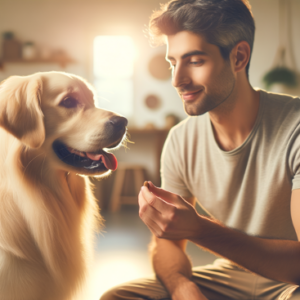
Incorporating Focus Exercises
As we venture deeper into the realm of focused training, it’s vital to introduce specific exercises designed to enhance your dog’s attention. These exercises not only improve obedience but also strengthen the bond you share with your dog. With consistency and patience, your canine companion can learn to maintain focus in various environments, making walks, training sessions, and outings far more enjoyable. Here are a few key exercises to consider adding to your training routine.
1. “Look at Me” Command
One of the most beneficial focus exercises is teaching your dog to maintain eye contact. The “Look at Me” command helps your dog prioritize your presence over distractions.
How to Implement:
- Choose a Quiet Environment: Start in a location free from distractions.
- Get Your Dog’s Attention: Hold a treat close to your face, right at eye level.
- Use the Command: Say “Look at me” or “Watch me” in a clear, happy tone.
- Reward Eye Contact: As soon as your dog makes eye contact, reward them with the treat and praise.
- Practice Regularly: Repeat this exercise for 5-10 minute intervals. Gradually increase the distance of the reward until your dog can hold eye contact without being prompted.
2. “Watch Me” Command
Similar to the “Look at Me” command, the “Watch Me” command can be a great tool for gaining your dog’s attention when distractions arise, especially in public spaces.
How to Implement:
- Start with Basic Commands: Ensure your dog knows and responds to basic commands before introducing this exercise.
- Select a Location with Mild Distractions: This could be your backyard or a quiet park.
- Get Their Focus: Say your dog’s name, then command “Watch me” while holding a treat up to your face.
- Reward Immediately: When your dog looks at you, praise them enthusiastically and provide the reward.
- Increase the Challenge: Gradually add more distractions or practice the command during walks.
3. “Stay” with Distractions
This exercise builds on the “Stay” command but adds a distraction component, allowing your dog to learn to ignore distractions while remaining focused on you.
How to Implement:
- Begin with a Solid “Stay”: Ensure your dog is comfortable with the “Stay” command in a distraction-free environment.
- Introduce Mild Distractions: Have a friend or family member walk by while your dog remains in the “Stay” position.
- Increase Distractions Gradually: Over time, incorporate more challenging distractions, such as toys or other dogs in the vicinity.
- Reward for Focus: After a successful “Stay,” reward your dog any time they successfully ignore distractions and continue to focus on you.
4. “Find It” Game
This game not only sharpens your dog’s focus but also enhances their problem-solving skills. It can be particularly useful for active dogs that require more mental stimulation.
How to Implement:
- Gather Treats: Start with a pouch or container of treats your dog enjoys.
- Introduce the Command: Show your dog the treat, then command “Find it” as you hide it somewhere nearby.
- Encourage Search: Let your dog sniff around to locate the treat. You can make it easier by placing the treat in plain view initially.
- Gradually Increase Difficulty: As your dog becomes adept at finding treats, hide them in more challenging spots or around the yard.
- Reward Success: Always reward your dog when they successfully find the treat, reinforcing their focus and problem-solving abilities.
5. “Go to Your Spot”
Teaching your dog to go to a designated area can also promote focus and self-control. It helps your dog learn to settle down in various situations.
How to Implement:
- Select a “Spot”: Choose a mat, bed, or specific area where you want your dog to go.
- Use a Command: Lead your dog to the spot while saying “Go to your spot” or simply “Spot.”
- Reward for Compliance: Once your dog reaches the spot, offer praise and a treat.
- Practice the Command: Gradually increase the distance between you and the spot, requiring your dog to remain focused on the command without visual cues from you.
- Introduce Distractions: Once your dog understands the command, practice with distractions present.
Incorporating these focus exercises into your training routine is a commitment that yields significant rewards. As you guide your dog through these activities, remember to celebrate their progress and ensure that training remains a fun experience for both of you.
By maintaining clear communication and employing these targeted exercises, you’ll undoubtedly notice an improvement in your dog’s attention and overall behavior. Each session strengthens your partnership, preparing your dog for a world filled with distractions while maintaining their keen focus on you.
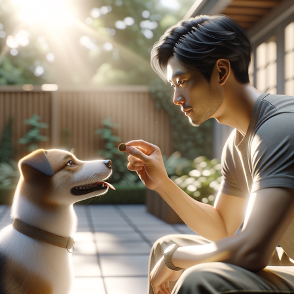
Gradually Increasing Distractions: Strategies for Focus
As dogs progress in their training, it’s essential to introduce distractions slowly and methodically. Proper exposure to various environments helps your dog learn to focus amid distractions, a vital skill for a well-behaved pet. In this section, we’ll outline effective strategies to gradually reintroduce distractions during training sessions.
The Power of Gradual Exposure
Why Gradual Exposure is Key
Dogs are naturally curious creatures, and introducing them to distractions helps enhance their focus. However, sudden exposure to overwhelming stimuli can lead to frustration and anxiety. By gradually increasing distractions, you cultivate a dog’s ability to concentrate despite the dynamic world around them. This strategy doesn’t just enhance training; it fosters their confidence.
1. Start Small: Familiar Environments First
Controlled Settings for Initial Training
Begin the reintroduction of distractions in a familiar and controlled environment. For instance, practice basic commands like “sit” and “stay” within your home or a quiet backyard. After your dog shows consistency, introduce low-level distractions such as toys, lightly bouncing balls, or gentle noises, gradually making it more challenging as they succeed.
Tips for Small Room Practice:
- Use a quiet room with just one or two potential distractions.
- Increase the level of distraction slowly (after every few successful repetitions).
- Reward your dog not just for completing a command, but for keeping their focus on you.
2. Gradually Involve Other Dogs and People
Socialized Distraction Training
Once your dog is comfortable with minor distractions, it’s time to add in social elements—other dogs and people. Consider arranging playdates with well-behaved dogs, or training sessions in a group class setting. Ensure that you maintain control over the environment to mitigate overwhelming stimuli.
Suggested Approaches:
- Train during quiet off-peak times at dog parks.
- Use your dog’s favorite toys or treats for extra motivation amidst distractions.
- Start with a distance away from the other dogs and move closer as your dog becomes more focused.
3. Use Natural Distractions in Everyday Routines
Incorporating Lessons into Daily Life
Integrating training with daily activities is critical. Walk in busy areas where there are other dogs, people, cars, and sounds. The key is to ensure that your dog learns to focus on you amidst this variety of distractions.
Steps to Implement:
- Begin your walks in familiar, less-crowded areas to warm up the focus exercises.
- Gradually navigate toward busier streets or parks over time.
- Use commands like “sit” or “down” during these walks when distractions arise, rewarding your dog for staying focused on you.
4. Practice in Diverse Environments
Embracing Variety
Once your dog is able to focus in moderate situations, begin introducing them to different environments. This can include varied locations such as pet stores, busy streets, or friend’s homes. The goal is to lace training with real-world scenarios your dog will encounter.
Tips for Effective Training in Various Locations:
- Always scout the location for potential distractions ahead of time.
- Keep initial visits brief to avoid overwhelming your dog; gradually increase duration with their comfort levels.
- Consistently reward your dog for maintaining focus on you regardless of unfamiliar distractions.
5. Keep Sessions Engaging
Making Training Fun and Interactive
To maintain your dog’s attention, make the training sessions engaging and fun. Mix up commands, play games like “find it” to utilize their nose and brain, or engage in playful activities interspersed with training commands.
Engagement Strategies:
- Rotate between different commands to prevent boredom.
- Incorporate toys and play as rewards.
- Utilize training as a fun bonding time rather than a chore.
Conclusion: The Path to Unwavering Focus
Through these strategies of gradual exposure to distractions, your dog can develop the focus necessary for enduring their training. This approach not only assists in training but significantly enhances your dog’s self-confidence in various environments. Take your time with each step, rolling back if needed, and reinforce your dog’s ability to listen amid exciting and potentially overwhelming distractions.

Utilizing Training Sessions for Engagement
Keeping training sessions engaging and fun is essential to ensuring that your dog remains focused and excited during the learning process. Just like humans, dogs can easily lose interest without stimulation and variety. This section will explore the importance of maintaining an engaging atmosphere during training and offer actionable tips to keep your furry companion motivated and interested.
The Importance of Engagement in Training
Training sessions should be enjoyable and rewarding experiences for both you and your dog. When your dog is engaged, they are more likely to learn quickly, retain information, and respond positively to commands. An engaging training environment nurtures curiosity and strengthens the bond between you and your dog. Here are a few key reasons why keeping training sessions fun is crucial:
1. Increased Motivation
Dogs thrive on excitement and play. When training is wrapped in a fun package, dogs are more likely to be motivated to respond to commands. Utilizing games, rewards, and praise can help maintain a high level of enthusiasm, making the learning process more effective.
2. Enhanced Memory Retention
Research suggests that animals learn and remember better when they are emotionally engaged. Engaging training sessions leverage positive emotions, helping your dog to associate commands and behaviors with enjoyable experiences. This association enhances memory retention and makes it easier for your dog to apply what they’ve learned in different settings.
3. Lower Stress Levels
When training is fun, it reduces the stress associated with learning. Dogs that feel anxious or pressured during training sessions are less likely to perform well. Creating a relaxed, enjoyable environment encourages your dog to approach training with confidence and positivity.
Tips for Keeping Training Sessions Engaging
Now that we understand the importance of engagement in training, here are some actionable tips to keep your dog motivated and interested:
1. Incorporate Play into Training
- Make Training a Game: Turn commands into playful activities. For instance, use fetch or tug-of-war to teach commands like “drop it” or “come.” This approach not only reinforces learning but also keeps the energy high, making your dog eager to participate.
2. Use Interactive Toys
- Engagement through Tools: Utilize puzzle toys, treat-dispensing balls, or interactive training aids to keep your dog mentally stimulated. These toys not only provide physical activity but also challenge your dog’s problem-solving skills, making training more dynamic.
3. Vary the Routine
- Change it Up: A consistent routine is important, but too much repetition can lead to boredom. Incorporate new tricks, obstacles, or environments to keep your dog curious. Every few sessions, introduce a surprise element—whether it’s a new toy or a different location—this keeps the training fresh and exciting.
4. Set Achievable Goals
- Small Wins Matter: Break down more challenging commands into smaller, manageable steps. Celebrate small victories to keep your dog engaged. For example, if you’re teaching a complex trick, first reward your dog for just performing a portion of it.
5. Use Short Training Intervals
- Quality over Quantity: Keep sessions short and focused—five to ten minutes is ideal. After a few focused minutes, engage in a quick play session or a fun distraction before returning to training. This not only makes learning enjoyable but also keeps your dog from becoming fatigued or disinterested.
6. Celebrate with Enthusiasm
- Positive Reinforcement: Your excitement will be contagious! Use enthusiastic praise, treats, or playtime as rewards. When your dog performs well, celebrate with joy and exuberance—the excitement will encourage them to repeat the desired behavior.
Conclusion: Elevate Your Training Game
By incorporating engagement techniques into your training sessions, you’ll not only help your dog learn but also deepen the bond you share. Keeping training fun, exciting, and varied creates a positive atmosphere where your dog can thrive.
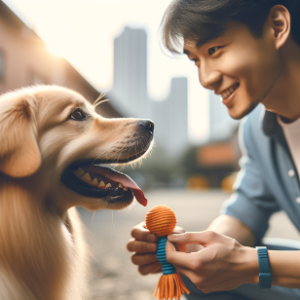
Maintaining Eye Contact: The Significance of the Dog-Owner Connection in Focused Training
One of the most critical aspects of focused training is the ability to foster eye contact between you and your dog. Establishing this connection serves as a powerful tool that enhances communication, encourages obedience, and solidifies the bond between you and your pet. In this section, we will explore why maintaining eye contact is essential for training, how it influences your dog’s behavior, and practical techniques to promote sustained eye contact.
Why Eye Contact Matters in Dog Training
Eye contact is a universal sign of trust and attention, not just among humans but also in our canine companions. When your dog locks eyes with you, it signals their willingness to listen, learn, and engage. Here are several reasons why eye contact is so significant in maintaining focus during training:
- Natural Communication Signal: Eye contact acts as a non-verbal cue that helps convey your commands and intentions. When your dog looks at you, they are more likely to interpret your body language and any gestures you provide, leading to clearer communication.
- Encourages Focus: Making eye contact minimizes distractions from their environment, allowing your dog to concentrate solely on you and the task at hand. This focus is crucial, especially in noisy or bustling settings.
- Building a Stronger Bond: Sustained eye contact enhances the bond between you and your dog, reinforcing trust and loyalty. Dogs that confidently engage in eye contact tend to feel more secure in their relationship with their owners.
- Encourages Obedience: A dog that makes eye contact while training is more likely to respond promptly to commands. This feedback loop helps them understand desired behaviors more clearly, making training more effective.
Techniques to Promote Sustained Eye Contact
Creating a foundation for eye contact through training requires consistent practice and patience. Here are several actionable techniques that can help establish and promote sustained eye contact between you and your dog:
- Use a Clicker or a Marker Word: Start during training by using a clicker or a specific word like “yes” whenever your dog looks at you. This helps them associate making eye contact with positive reinforcement.
- Introduce Eye Contact in a Calm Environment: Begin your training in a quiet, distraction-free zone. Encourage your dog to look at you by holding their favorite treat or toy near your face. When they look up at you, reward the behavior immediately.
- Increment Gradually: Once your dog becomes comfortable making brief eye contact, gradually increase the duration. Start with just a couple of seconds, rewarding them each time they maintain eye contact. Slowly build this to longer periods to strengthen their focus.
- Incorporate Eye Contact into Commands: Integrate the eye contact practice into basic commands. For instance, before giving the “sit” command, encourage them to look at you first. This association will encourage them to focus on you throughout their training.
- Practice in Various Settings: Challenge your dog by practicing eye contact in different environments, such as during walks or at the park. This forces them to focus on you despite potential distractions like other dogs, people, or noises.
- Use Storytime or Training Games: Make training engaging by using storytime or playful activities. Ask for eye contact during games like “find it” or when introducing new tricks. This method makes the exercise enjoyable, enhancing their willingness to participate.
- Work on Short Sessions: Since dogs have shorter attention spans, keeping training sessions focused and brief can yield better results. Aim for sessions of 5 to 10 minutes, with plenty of breaks and opportunities for play.
The Impact of Consistent Eye Contact
As your dog develops the habit of maintaining eye contact, you’ll notice significant improvements in their behavior and responsiveness to commands. The combination of these techniques will lead to a more attentive and connected canine companion. Real-world examples showcase how fostering eye contact can profoundly impact training outcomes:
- Increased Recall Success: Owners report that their dogs are much more reliable in returning on command when they have established a solid habit of looking to their owner before responding.
- Improved Behavior in Public Places: Dogs that frequently exhibit eye contact while walking tend to exhibit better leash manners and fewer impulsive behaviors, as they are more focused on their owner and less distracted by their environment.
- Building Trust with Reactive Dogs: For dogs that exhibit fear or aggression toward other dogs or people, practicing eye contact during these scenarios can help de-escalate their emotional responses, paving the way for more favorable interactions.
Conclusion: Emphasize Eye Contact for a Well-Trained Dog
Training your dog to maintain eye contact is a pivotal aspect of focused training that enriches your communication and deepens your bond. With consistent practice, patience, and the techniques discussed, you can promote sustained eye contact and reap the benefits of a more attentive and responsive pet.

Adapting to Different Learning Styles
Just as each dog displays a unique personality, they also possess distinctive learning styles that can significantly influence their training. Adapting your training techniques to match your dog’s preferred learning style not only makes the training process more effective but also strengthens the bond between you and your furry friend. In this section, we’ll explore how to recognize these various learning preferences and respond accordingly.
Recognizing Different Learning Styles in Dogs
Understanding your dog’s learning style is the first step toward effective training. Dogs generally exhibit three primary learning styles: visual, auditory, and tactile. Here’s how to identify each one:
1. Visual Learners
Visual learners are dogs that respond well to visual cues and body language. These dogs are often more engaged when they can see what’s expected of them, so incorporating visual signals into your training sessions is crucial.
- Identifying Traits: If your dog is consistently looking for visual cues, such as your hand gestures or body positioning when giving commands, they may be a visual learner.
- Training Techniques:
- Use hand signals in conjunction with verbal commands to help your dog associate sight with action.
- Utilize treat placement or toys to direct your dog’s attention and focus.
- Incorporate training videos or demonstrations to mimic behaviors.
2. Auditory Learners
Auditory learners are dogs that react positively to sound and verbal commands. These dogs thrive in environments where they can hear their owner’s voice clearly and can quickly learn through tones and inflections.
- Identifying Traits: If your dog perks up at the sound of your voice or is quick to respond to verbal commands even without accompanying gestures, they likely fall into this category.
- Training Techniques:
- Use a variety of tones to reinforce commands. A happy voice for praise, a firm tone for corrections.
- Incorporate clicker training; the sound of the clicker can be a powerful tool in teaching commands.
- Frequently engage your dog in verbal interactions, using their names and commands to reinforce your connection.
3. Tactile Learners
Tactile learners are dogs that learn best through touch and physical interaction. These dogs may enjoy being petted or physically guided through tasks as a part of the learning experience.
- Identifying Traits: If your dog responds well to touch or nudges and seems to learn by physically experiencing tasks, they may be a tactile learner.
- Training Techniques:
- Use gentle guidance to steer your dog into the correct positions when practicing commands.
- Introduce toys or interactive puzzles that encourage the use of paws and noses.
- Employ playful activities such as fetch or tug-of-war to reinforce command learning through physical engagement.
Adapting Training Techniques for Maximum Engagement
Knowing your dog’s learning style helps customize your training approach, drastically increasing effectiveness and engagement. Here are some actionable tips for adapting your training sessions based on your dog’s preferred style:
1. Tailor Your Approach
- If you have a mixed-learning dog, try to incorporate elements from all three styles to keep your training sessions diversified and engaging. For example:
- Use visual cues for commands like “sit,” while verbally reinforcing the command with praises and an excited tone.
- During play, use physical cues to highlight expectations while providing interactive tasks.
2. Monitor Progress and Revisit Techniques
- As your dog progresses in training, be observant of their responses. If you notice they seem less engaged, it might be a sign to swap techniques or emphasize their primary learning style at that moment.
3. Introduce New Challenges
- Once your dog has mastered a command through a specific learning style, challenge them by incorporating aspects of the other styles. For instance, if they’ve learned ‘down’ through tactile methods, introduce visual cues to reinforce the behavior without physical assistance.
4. Reward Consistently
- Regardless of their learning style, all dogs thrive on positive reinforcement. Using high-value treats or enthusiastic praise whenever your dog successfully responds to a command will encourage them to repeat the behavior.
Real-World Example: Training a Rescue Dog
Consider Max, a rescue dog who struggled with basic commands. After some observation, his owner noticed that Max responded quickly to hand signals but seemed overwhelmed by verbal commands. By focusing on visual cues—such as using a combination of gestures and minimal verbal prompts—Max’s responses improved dramatically. His owner also engaged him in hands-on training, where she lightly guided him during the learning process. Max blossomed into a confident, well-trained dog as he found comfort in a learning style that suited him.
Conclusion: Embrace the Diversity in Learning
Adapting your training techniques to accommodate your dog’s unique learning style can significantly enhance their training experience and your relationship. By taking the time to recognize and respond to your dog’s learning preferences, you transform training sessions from a chore into an enjoyable bonding activity.
As you embark on this journey, remember that each dog is an individual. Embrace their uniqueness when training and foster a rewarding environment that celebrates their success.

Combining Play with Training: The Key to Enhancing Focus
Incorporating play into training sessions is a strategic approach that not only makes learning enjoyable but also significantly enhances your dog’s focus. While traditional training methods emphasize commands and discipline, blending play with learning fosters an engaging environment conducive to better concentration and retention of skills. Let’s explore the myriad benefits of integrating play into your training routine and discover practical ways to achieve optimal results.
The Benefits of Blending Fun and Learning
- Boosting Engagement Levels
Play activates your dog’s natural instincts to explore, chase, and problem-solve, thus elevating their overall engagement during training. When dogs enjoy what they’re doing, they’re more likely to remain attentive and enthusiastic. Fun activities can spark interest and help eliminate the monotony of repetitive training drills.
Example: Incorporating a game of fetch as a reward after practicing basic commands can amplify enthusiasm for learning new skills.
- Improved Learning Retention
Research indicates that the brain retains information better when it is associated with positive experiences. Training sessions that include games or fun activities allow your dog to associate learning with enjoyment, which helps solidify various commands and tricks in their memory.
Data Insight: A study on canine behavior found that dogs’ retention of commands improved by up to 40% over conventional training methods when paired with play.
- Reduction of Stress and Anxiety
Training can sometimes induce anxiety, particularly in new environments or when introducing complex commands. Combining play with training allows dogs to associate the process with positive experiences, resulting in a more relaxed demeanor. With less stress, dogs are more likely to focus.
Real-World Example: If your dog feels overwhelmed by distractions in a busy park, incorporating a game of tug-of-war can help them regain their calm and redirect their focus back to you.
Creative Ideas to Integrate Play into Training
- Use Interactive Toys
Engage your dog both physically and mentally by utilizing interactive toys as part of your training regimen. Toys that dispel treats or require problem-solving can encourage your dog to think critically while still having fun.
- Enrichment Tip: After your dog successfully completes a command, reward them with access to their favorite interactive toy to reinforce positive behavior.
- Game-Based Learning
Turn training sessions into games. For instance, you could use a variation of “Hide and Seek” with commands. Hide in a room and call your dog; when they find you, reward them with praise or treats.
- Training Game Setup: Start by having a family member hold your dog back, then call them once you’ve hidden. This will reinforce the “come” command in a fun, engaging way.
- Agility Courses
Setting up an agility course in your backyard can merge physical exercise with focused training. Use jumps, tunnels, and weave poles to create an exciting challenge that requires your dog to listen and respond to your commands.
- Implementation Advice: Begin with simple obstacles and incrementally elevate the difficulty as your dog becomes more adept at following instructions and navigating through challenges.
- Incorporate Trick Training
Teaching your dog new tricks is not only delightful but also serves as a fantastic way to blend play and training. Tricks like “spin,” “roll over,” or “play dead” can be exciting and mentally stimulating for your dog.
- Training Tip: Use treats to entice your dog while introducing new tricks, and always pair commands with enthusiastic praise to keep their spirits high.
Regular Assessment and Adaptation
Incorporating play into training isn’t a one-size-fits-all approach. Regularly assess how your dog responds to different methods. Keep an eye on their motivation levels and adjust activities based on their preferences.
- Feedback Loop: Pay attention to which games effectively capture your dog’s attention. For instance, if they show enthusiasm for fetch but don’t respond as well during trick training, consider incorporating more elements of retrieval into your sessions.
Conclusion: Elevate the Play in Your Training Routine
Integrating play into dog training yields countless benefits, from enhanced focus to improved retention and reduced anxiety. By approaching training as a fun and engaging experience, you create an environment that fosters both learning and enjoyment.
As you embark on this exciting journey of combining play with training, consider the various strategies discussed above, and most importantly, tailor your approach to fit your dog’s unique personality and preferences.

Recognizing Signs of Frustration: Understanding Canine Communication
In the realm of dog training, one of the most crucial aspects of cultivating a strong bond with your furry friend is understanding their communication signals. Just as humans express emotions through body language and tone, dogs communicate their feelings and needs through various signals. Recognizing signs of frustration or distraction in dogs allows owners to intervene effectively, re-engaging their pets and reinforcing positive behavior.
Understanding Canine Frustration
Frustration in dogs can manifest in several ways. It’s essential to understand these signs to address the underlying issues and help your dog stay engaged during training sessions or everyday activities. Here are some common indicators that might signal frustration or distraction:
- Body Language: Look for signs such as stiff body posture, a lowered head, or pinned ears. If your dog starts avoiding eye contact or turns their body away from you, it could indicate they are feeling overwhelmed or frustrated.
- Vocalizations: Increased barking, whining, or growling can be a clear sign your dog is feeling stressed. While barking is a natural form of communication, excessive vocalization can suggest your dog is not comfortable with the situation.
- Pacing or Destructive Behavior: If your dog begins to pace back and forth or start chewing on furniture or toys, it may be a sign that they are struggling to focus or feeling anxious.
- Excessive Licking: Dogs might turn to self-soothing behaviors, one of which includes excessive licking of their lips, paws, or other body parts. This can signal a heightened level of stress or frustration.
Interventions to Re-engage Your Dog
Recognizing these signs is just the first step; the next is knowing how to intervene and help your dog refocus. Here are several actionable strategies you can employ to re-engage your canine companion:
1. Change the Environment
Sometimes, a simple shift in the environment can make a world of difference. If your dog is showing signs of frustration during training, consider moving to a quieter location with fewer distractions. Reducing sensory overload will help your dog concentrate better on your commands.
2. Utilize Play as a Reward
Incorporating playtime as a reward can be an effective way to refocus your dog. When you notice them losing interest or frustration creeping in, take a break and engage in a quick game of fetch or tug-of-war. This physical activity can help reset their mood and re-engage them with the training session.
- Implement Short Play Breaks: After every few minutes of focused training, allow for a short, playful interlude. This balance between work and play will keep your dog engaged.
3. Introduce New Challenges Gradually
Just as humans can become disinterested in repetitive tasks, so too can dogs. To maintain their focus, introduce new challenges gradually. This could mean adding new commands, increasing the complexity of tasks, or changing the training exercises altogether.
- Use a Considerate Approach: Start with simple commands or actions your dog is already familiar with, and slowly add complexity as their focus stabilizes.
4. Practice Engaging Techniques
Engagement is critical in maintaining your dog’s attention. Use techniques that require your dog to actively participate:
- Interactive Toys: Invest in puzzle toys, treat-dispensing balls, or other interactive devices that can challenge your dog mentally and keep them occupied.
- Utilize Clicker Training: Enhance your training sessions with clicker training to reinforce positive behaviors immediately. This tool can help maintain your dog’s focus and create a clear link between actions and rewards.
5. Calm and Reassure Your Dog
Sometimes, dogs simply need reassurance from their owners. When you notice signs of frustration, calmly approach your dog. Use a gentle tone and give them time to relax before re-engaging with the task. Dogs respond to their owner’s emotions, so maintaining a calm demeanor can significantly impact your dog’s mood.
Conclusion: Strengthen Your Connection Through Understanding
By recognizing the signs of frustration in your dog and implementing these interventions, you can significantly improve your training experience and enhance your relationship. Understanding canine communication fosters a bond based on trust, respect, and kindness.
Remember that training should be an enjoyable experience for both you and your dog.

Setting Realistic Goals: The Cornerstone of Successful Dog Training
In the world of dog training, establishing realistic goals is vital for both the dog and the owner. It not only leads to greater success in training but also enhances the bond between you and your canine companion. When goals are achievable, they kindle motivation and pave the way for consistent progress, making the training experience enjoyable for both parties. In this section, we’ll outline the importance of having realistic training goals and offer guidance on how to measure progress over time.
Why Realistic Training Goals Matter
1. Enhances Motivation
Setting realistic goals gives you and your dog a clear vision to work towards. Achieving small milestones can be incredibly motivating and serves as a confidence booster for both. For instance, training your dog to sit on command within a week is a far more attainable goal than aiming for an entire repertoire of tricks. When you reach these incremental goals, it reinforces positive behavior and encourages further engagement.
2. Reduces Frustration
Training often involves numerous challenges, and unrealistic expectations can lead to disappointment. If the owner expects their dog to master complex commands within a short period, it may result in frustration and a sense of failure. Realistic goals, on the other hand, help mitigate frustration, ensuring that both the dog and owner stay positive throughout the training process.
3. Builds Stronger Bonds
When you set and achieve realistic goals, you witness the training process as a collaborative effort, promoting teamwork. Each small victory strengthens your relationship with your dog. For instance, if your dog successfully learns to fetch a ball within a month, this shared achievement creates a sense of camaraderie and enhances trust between you.
How to Set Realistic Training Goals
Start Small
- Begin with Basic Commands: Start with simple commands like “sit,” “stay,” and “come.” Aim for specific milestones, such as having your dog sit consistently in less than a week. Developing a foundation allows you to gradually build onto more complex training.
Observe Your Dog
- Consider Individual Pace: Each dog has its own unique learning speed. Pay attention to your dog’s responses and adjust goals accordingly. If your dog struggles with a command, it’s best to simplify or break it down further rather than rushing forward.
Utilize SMART Goals
- Specific, Measurable, Achievable, Relevant, Time-Bound: This framework helps refine your goals. For instance, instead of stating, “I want my dog to be well-behaved,” you could say, “In the next month, I want my dog to reliably come when called at least 90% of the time.” This goal is clear and allows you to track your dog’s progress effectively.
Measuring Progress Over Time
Tracking your dog’s training journey is crucial for assessing improvement and fine-tuning future goals.
1. Keep a Training Journal
- Document Everything: Record each training session, noting what commands were practiced, response times, and areas that need improvement. Keeping a log will not only help you identify patterns but also serve as a great tool for celebration as you see your progress unfold.
2. Video Record Sessions
- Visual Progress: Utilizing video recordings can help you capture your dog’s development over time. Comparatively reviewing earlier and later sessions can provide tangible evidence of improvement and keep motivation levels high.
3. Set Checkpoints
- Regular Reviews: Establish regular intervals (bi-weekly or monthly) to review your training progress. Reflect on what strategies worked, what didn’t, and adjust your goals accordingly. These reviews can inform whether you need to raise the bar or scale back.
4. Celebrate Small Wins
- Acknowledge Achievements: Recognizing milestones is pivotal. Whether it’s successfully completing a “sit” without treats or heeding a “stay” command in a distracting environment, celebrating these moments reinforces your dog’s confidence and keeps motivation alive.
Conclusion: Cultivating a Win-Win Scenario
Establishing realistic training goals is a game-changer in creating a positive and effective training environment for both you and your dog. By enhancing motivation and reducing frustration, these goals lay the groundwork for a long-lasting bond. Remember to observe your dog’s progress and adjust your strategies accordingly to ensure that the training journey is both fulfilling and successful.
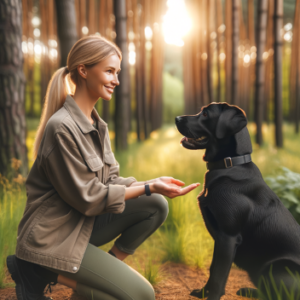
Celebrating Small Victories: The Key to Sustained Motivation in Dog Training
As a dog owner, the journey of training can be a roller coaster of emotions filled with highs and lows. The challenges of patience, consistency, and dedication are well-known, but in this epic quest to nurture a well-behaved companion, it’s the small victories along the way that deliver the most joy. Celebrating progress—no matter how trivial it may seem—is essential for maintaining motivation for both you and your furry friend. Let’s explore the significance of recognizing these small achievements and discover effective ways to commemorate them.
The Significance of Celebrating Progress
Celebrating small victories serves multiple purposes in dog training, benefiting both the dog and the owner. Here are some compelling reasons to elevate your training game through recognition of minor achievements:
1. Building Confidence
For dogs, small successes can significantly enhance their confidence levels. When your dog successfully follows a command, such as “sit” or “stay,” it reinforces their belief in their ability to understand and respond to your requests. This confidence can lead to a willingness to learn more complex commands and behaviors, fostering an environment of continuous growth.
2. Strengthening the Bond
Celebrating achievements, big and small, strengthens the bond between you and your dog. Acknowledging these victories—whether through praise or rewards—creates a sense of teamwork. Both you and your dog feel an integral part of the learning process, cementing your relationship further.
3. Sustaining Motivation
Training can sometimes become monotonous or discouraging. Celebrating small milestones counteracts this. It provides both you and your dog with positive reinforcement. When dogs realize that their efforts are recognized and appreciated, they are more likely to remain engaged and motivated for future training sessions.
Effective Ways to Celebrate Achievements
Now that we understand the importance of celebrating small victories, let’s explore some engaging ways to acknowledge these achievements in your dog training journey:
1. Verbal Praise and Affection
Never underestimate the power of your voice. Words of encouragement can turn a training session into a positive experience. A simple “Good job!” or “Well done!” followed by pets and affection can be incredibly motivating for your dog. This kind of acknowledgement not only boosts their confidence but also strengthens your emotional bond.
- Example: If your dog successfully completes a series of commands, shower them with praise immediately to reinforce their behavior.
2. Treat Rewards
Utilizing treats is a traditional yet effective way to celebrate successes. When your dog performs a command correctly, reward them with a treat. Opt for something special that they don’t get daily. This serves as a tangible acknowledgment of their accomplishment.
- Tip: Use small, low-calorie treats during training sessions to prevent overindulgence while still making your furry friend feel appreciated.
3. Playtime Fun
After reaching a milestone, dedicate a joyful play session as a reward. Whether it’s a game of fetch, tug-of-war, or simply chasing each other in the backyard, engaging in playtime activities can significantly elevate your dog’s enthusiasm for training.
- Example: After successfully learning a new trick, let your dog choose a favorite game they enjoy. This not only rewards their achievement but also strengthens their connection to you as a fun and loving owner.
4. Progress Chart
Visual representation can be an excellent method for tracking achievements. Consider creating a progress chart where you record milestones your dog achieves during training. You can decorate the chart with stickers or paw prints for each accomplishment, making it a fun activity for both you and your dog.
- Tip: Celebrate larger milestones, like completing an entire training course or mastering difficult tricks, with a special reward such as a fun outing to a dog park.
The Importance of Consistency
As you navigate through the journey of dog training, consistency in recognizing and celebrating progress is crucial. Make it a routine to acknowledge your dog’s achievements regularly. Whether it’s daily, weekly, or monthly, frequent celebrations enhance motivation and foster a consistent habit of learning.
Conclusion: Celebrate the Journey
In summary, appreciating even the smallest victories in dog training plays a vital role in fostering confidence, strengthening the relationship between you and your furry friend, and maintaining motivation. By celebrating achievements through praise, treats, playtime, and visual tracking, you can cultivate an enjoyable training environment that encourages continual growth.
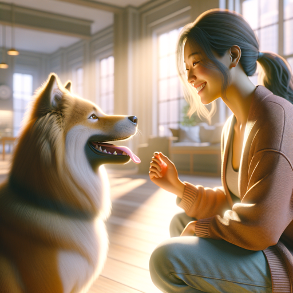
Continuing Education and Adaptation: The Path to Ongoing Training Success
While establishing a foundation of focused training for your dog is crucial, it’s equally important to recognize that this is not a one-time endeavor. Canine training should be viewed as an ongoing process; one that requires continuous education and adaptation. As both our knowledge of dog behavior and training techniques evolve, so too should our methods. This empowers you not only to enhance your own skills but also to better meet your dog’s needs as they grow and change.
The Need for Lifelong Learning
Dog training isn’t just about teaching commands; it’s about creating a lifelong partnership based on mutual respect and understanding. As your dog’s behavior evolves—they may confront new challenges or changes in their environment—staying informed and adaptable is key. Continuing education in canine training helps ensure that you’re prepared to tackle these changes effectively. Here are some compelling reasons to prioritize ongoing education in your training journey:
Keeping Up with New Techniques and Tools
The field of dog training is constantly evolving, with new research shedding light on canine behavior and teaching methods. Techniques that may have been standard a decade ago might be deemed less effective or even counterproductive today. To provide your dog with the best training experience, regularly seek out new tools and techniques. Here’s how:
- Attend Workshops and Seminars: Local trainers and behaviorists often host workshops, providing firsthand experience in new techniques.
- Enroll in Online Courses: The convenience of online learning allows you to explore specialized areas of training at your own pace.
- Join Professional Dog Training Organizations: Many organizations offer resources, networking, and continued education opportunities that keep you informed about best practices.
Adapting to Your Dog’s Changing Needs
As your dog ages, their physical capabilities and emotional needs will change. What worked for them as a puppy might not suit them in their later years. Recognizing these shifts is essential for effective training. Implement the following strategies to adapt your training approach as your dog matures:
- Monitor Physical Fitness: Adjust training routines to align with your dog’s age and health. Older dogs may need slower pacing or gentler exercises.
- Modify Commands: As new distractions or behavioral quirks arise, be open to altering previously established commands to maintain clarity and consistency.
- Reassess Motivation: Introduce new rewards or incentives as your dog’s interests evolve. What once motivated your dog may no longer hold their attention.
Real-World Examples of Lifelong Learning
1. Seeking Professional Help When Needed
Take the case of Jamie, a devoted dog owner whose golden retriever, Max, began showing signs of anxiety during walks. Instead of brushing it off as a phase, Jamie enrolled in a local workshop about canine anxiety and behavior modification. By adjusting her training techniques based on expert advice, Jamie learned how to help Max feel more secure in public spaces. This not only improved Max’s behavior but also strengthened their bond.
2. Engaging with Online Communities
Then there’s Alex, who, after adopting a rescue dog, joined an online community of dog owners dedicated to continuous learning. By sharing experiences and tips with other members, Alex discovered innovative training methods tailored to his dog’s background. This collaboration not only provided support but also opened doors to higher levels of training, ultimately leading to an adaptable and well-behaved companion.
3. Combining Different Training Styles
Lastly, consider Sarah, who realized that her dog, Bella, flourished with a combination of positive reinforcement and clicker training. After attending a workshop on clicker techniques, Sarah started integrating this new approach into her training sessions. The results were remarkable; Bella became more engaged and responsive. This blend of strategies not only kept her training fresh but also addressed Bella’s unique learning style.
Tips to Foster Continuous Improvement
To ensure that you and your dog don’t plateau in your training journey, consider these actionable tips for integrating continuing education into your routine:
- Set New Goals Regularly: Just as your dog achieves mastery over certain commands, set new training goals to stimulate both your growth and your dog’s. Whether it’s practicing a new trick or addressing behavioral issues, fresh objectives can reignite motivation.
- Stay Curious: Keep an open mind about different training philosophies. Books, podcasts, and videos can offer fresh perspectives that enhance your knowledge and skills.
- Evaluate Progress: Periodically assess your dog’s progress and your training efficacy. This reflection can reveal areas for improvement, prompting you to adapt your methods accordingly.
- Seek Feedback: Enlist the help of professional trainers or experienced dog owners to gain constructive feedback. An outside perspective can help you identify blind spots in your training approach.
- Encourage Group Training: Training in a group setting can expose both you and your dog to varied styles and challenges. This fosters social skills and encourages adaptability in unfamiliar situations.
Conclusion: Elevate Your Training Journey
In summary, viewing training as an ongoing educational process is essential for both you and your dog. Continual adaptation and skill enhancement not only empower you to meet your dog’s needs more effectively but also deepen the relationship you share.
By seeking ongoing opportunities for learning and growth, you’ll ensure that both you and your furry companion maximize your training potential, fostering a resilient partnership for years to come.
news via inbox
Nulla turp dis cursus. Integer liberos euismod pretium faucibua



